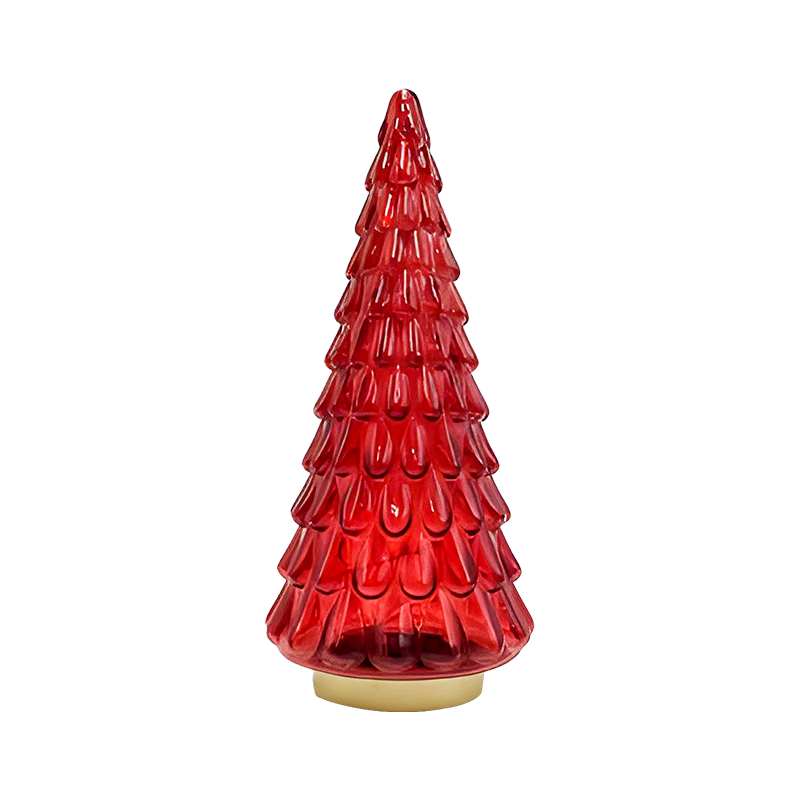How does GLASS LED LIGHT perform in high or low temperature environments?
The performance of glass LED lights in high or low temperature environments is one of the important indicators for evaluating their performance. LED lamps themselves are sensitive to temperature, and the characteristics of glass materials will also affect the overall performance. The following is a specific analysis of the performance of glass LED lights in extreme temperature environments:
Performance in high temperature environments
The impact of temperature on LED chips
Reduced light efficiency: LED chips will reduce luminous efficiency at high temperatures, resulting in a decrease in brightness. Generally speaking, the light output of LEDs may decrease by about 5%-10% for every 10°C increase in temperature.
Shortened life: Excessive temperatures will cause LED chips to age faster, thereby shortening their service life. Long-term exposure to high temperature environments may significantly reduce the expected life of lamps from tens of thousands of hours.
The impact of glass materials
Thermal expansion and stress: Glass will expand thermally at high temperatures. If the design is not appropriate, it may cause the seal between the glass and the lamp body to fail or even break.
Transmittance changes: Some types of glass may undergo slight deformation or surface oxidation at high temperatures, affecting the transmittance and uniformity of light.
Importance of heat dissipation design
Heat sink function: High-quality glass LED lamps are usually equipped with efficient heat dissipation systems (such as aluminum heat sinks or thermally conductive silicone) to conduct heat from the LED chip to the external environment.

Air circulation: Good ventilation conditions help reduce the temperature inside the lamp. If installed in a confined space, additional cooling measures (such as fans or natural convection design) should be considered.
Performance in low temperature environment
The impact of temperature on LED chips
Start-up problems: At extremely low temperatures (such as below -20°C), LED chips may take longer to reach normal working conditions. This is because low temperatures affect the performance of electronic components in the driving circuit.
Improvement of light efficiency: In contrast to high temperatures, low temperature environments usually improve the luminous efficiency and stability of LEDs because lower temperatures can reduce the heat loss of chips.
The impact of glass material
Cold brittleness risk: Glass becomes more fragile at low temperatures and is prone to cracking due to thermal shock (rapid temperature changes). Therefore, when used in cold areas, special glass materials that are resistant to low temperatures need to be selected.
Frost or ice: If the luminaire is installed outdoors and no moisture protection measures are taken, low temperatures may cause frost or ice to form inside, affecting light transmission and increasing the risk of failure.
Key to protective design
Sealing level: To prevent moisture from entering the interior of the luminaire, glass LED luminaires usually have a high protection level (such as IP65 or IP67). This is especially important in low-temperature environments.
Heating element: Some high-end products have built-in small heating devices to quickly preheat the luminaire in extremely low temperature conditions to ensure normal operation.
Comprehensive countermeasures
In order to make glass LED luminaires perform well in high or low temperature environments, manufacturers and users can start from the following aspects:
Material selection
Use special glass that is resistant to high and low temperatures (such as borosilicate glass or tempered glass).
Select high-quality LED chips and drivers to adapt to a wider temperature range.
Design optimization
Enhance the heat dissipation system, such as using larger heat sinks or improving airflow channels.
Improve the sealing and waterproof performance of the luminaire to avoid condensation or moisture intrusion.
Installation suggestions
In high-temperature environments, try to install the luminaire in a well-ventilated location and away from heat sources.
In low temperature environments, choose products that meet local climate conditions and regularly check whether the seals are intact.
Intelligent control
Use temperature sensors to monitor the operating temperature of the lamp in real time, and automatically adjust the power or start the heating function through the intelligent control system.
For users, fully considering the needs of the actual use environment during the purchase and installation process will help extend the service life of the lamp and ensure optimal performance.


 English
English Español
Español












